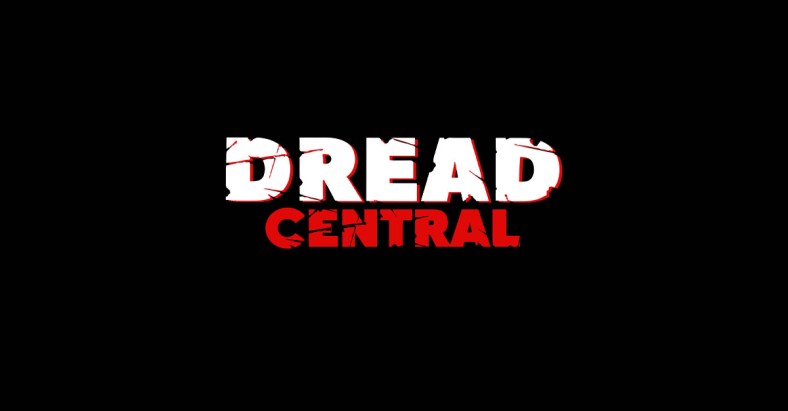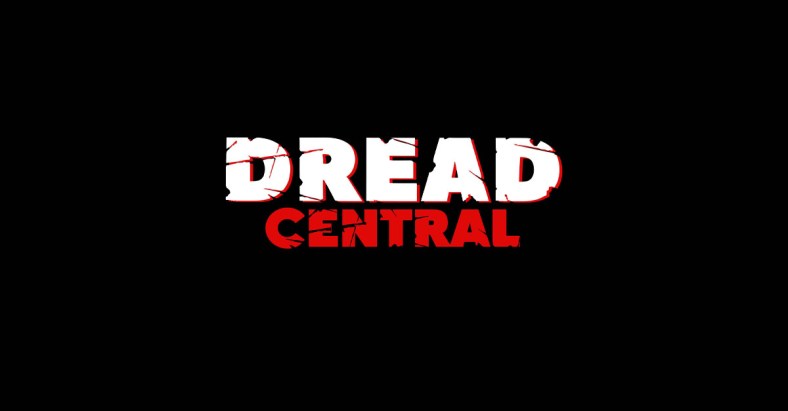Exploring a Variety of Horror in Japanese Anime

In the early 2000s, Japanese horror films took American audiences by storm. These pictures took form through numerous remakes, with such classics as Ringu (The Ring), Ju-on: The Grudge (The Grudge), and Honogurai Mizu no soko kara (Dark Water). These J-Horror remakes offered stories woven with Eastern folklore, dealing with ghosts, precognition, and yōkai, including lots of psychological twists. For some American filmgoers, these remakes were their first horror films, kicking off a life-long love for the genre.
In regards to other Japanese art forms, horror has shown remarkable promise through manga. One need not look further than the work of Junji Ito; the writer and illustrator is responsible for creating some of the most visceral and disturbing work within the genre. His short story collections, as well as his famous graphic novel Uzumaki, present worlds of psychological madness and despair.
It’s no secret that American audiences continue to love all sorts of media from Japan. However, there’s one medium from Japan that is met with as much love as it is met with criticism: Anime.
For as much as the medium is loved by fans, there are others that point out how the form is home to many tropes. While we may love Dragon Ball Z or Sailor Moon, we can’t deny the overt melodrama of character’s dialogue and actions. Whether it’s the over-the-top machismo or extreme cutesy nature, it’s difficult to deny the, at times, cringe-worthy elements of the art form.
However, it’s extremely important to note that these elements do not speak for all of anime. There are just as many shows that does not rely on tropes (or uses them effectively within a story’s framework). And when the right combination of elements comes together, anime and horror can go hand-in-hand like peanut butter and chocolate.
So with that said, I want to highlight four excellent anime titles that do the horror genre justice. These works present their own blend of horror, and masterfully use their medium to give viewers chills (or even turn their stomachs).
Hellsing Ultimate

The original video animation (OVA) is the main highlight of the Hellsing works (given that there was an anime and manga before Ultimate). What the OVA successfully accomplishes more so than the original works, however, is the extreme level of violence and darkness it exudes. Hellsing Ultimate follows our protagonist Alucard (the anime’s iconic vampire), along with the Hellsing organization; they work together to fight the monsters of the night that threaten mankind. The series overtime throws numerous antagonists at them, including the likes of Nazis, the Vatican, and other vampires.
What character tropes the anime uses work in its favor. There are a couple characters that act as comic reliefs, but other than those brief moments, the anime includes scenes of theatrical dialogue. In general, there are quite a few crazed antagonists throughout the anime; for the most part, many of these characters work. An example is Alexander Anderson, one of the show’s best antagonists, whose back story helps us understand his drive and personality.
However, it’s Hellsing Ultimate’s action sequences that make the show sincerely brutal and grotesque. Alucard is one of anime’s most powerful and iconic protagonists; while he takes on the role of anti-hero, his personality and ideals go beyond that of a flat archetype. For as repulsive and cruel as he can be, he also has a solid loyalty and respect to those close to him (or who he battles).
We see Alucard driven by pure bloodlust, but are also shown the somber traits of his personality. The former is where we see much of the anime’s ability to instill tension within its characters (and the viewer). His dialogue, as well as the voice acting behind it, present a sinister, even threatening aura. Given his extreme power, we see foes tear into Alucard, even tearing his limbs apart, and yet, he laughs and begs for more. His voice contains such a controlled, yet hysteric, masochistic nature, that we can empathize with the horror on his foe’s faces.
The violence is also splendid to witness for those looking for a gory rush. Hellsing Ultimate is packed with flailing limbs and literal waves of the undead. This animation also serves to masterfully capture the emotion of characters as mentioned previously; the show incorporates a hyper-realistic character design. Using a combination of stellar line work, coloring, and shadowing, the emotion of each character is genuinely felt. And for those seeking more pleasing aesthetics, the world of Hellsing Ultimate is a gothic delight. Weaving in those elements of shading and detail, the European structures are as beautiful as they are creepy.
For the horror fan who needs gallons of blood, you won’t want to miss out on Hellsing Ultimate.
Perfect Blue

Unlike the previous title, Perfect Blue is a film. Directed by Satoshi Kon and written by Sadayuki Murai, the picture tells the story of Mima Kirigoe, a famous pop singer who retires to pursue acting. I won’t give away plot details, but let’s just say that this film has a lot of similarities to Darren Aronofsky’s Black Swan.
The film is nothing short of brilliant. As the story progresses, the viewer will begin to question the reality of events as much as the protagonist. To sum Perfect Blue up as a psychological thriller may technically be accurate, but would also leave out a lot of the film’s details.
For all of Perfect Blue’s weirdness, it makes for a sincerely disturbing picture. As Mima strives to succeed as an actress, the stress continues to build upon her. Along with this stress comes a mysterious stalker and random violent actions taking place around her. This stress ends up taking over much of her psyche, altering her sense of time and reality. Getting into specifics would spoil the film, and the shock value of Perfect Blue is absolutely worth exploring firsthand.
The shock works in a way like David Lynch’s Mulholland Drive; sporadic jumps in time and random bits of disturbing nature ripple throughout each scene, and will have the viewer scratching their head as to what is genuinely taking place. These transitions are jarring, revealing a combination of unsettling imagery as we witness Mima’s sanity unravel. Perfect Blue represents masterful editing, as well as relatable characters.
In a unique way, the world of Perfect Blue feels close to the real world. Beyond the psychological elements, there’s nothing that fantastical that plays into anime stereotypes; even the way characters are drawn is plain, even bland. Wherein a lot of anime characters are given flashy detail and spruced up with bright colors, Perfect Blue gives us very ordinary people (with the exception of Mima and some other girls). For an animated film, Perfect Blue feels very human; in turn, this makes the blend of unsettling, even horrific scenes, more believable.
This is a film about obsession, and how some people are always striving to fit into an image. Mima is an empathetic character and watching her descent into madness is not only grim, it’s heartbreaking.
Another

For those who like mystery and stories that involve ghosts and curses, Another is right up your alley. The show follows Kōichi Sakakibara, a young boy who has just moved back to his birth town. The show opens with him waking up in the hospital after being sick for a month. Students from the new school and class he will attend come to visit Kōichi, but immediately begin to act strange around him. He meets a girl by the name Mei Misaki, and eventually learns of the curse that haunts class.
The show does a great job keeping you in the shadows, slowly trickling bits of important information overtime. In the beginning, the viewer will sense a great deal of weirdness coming from the characters. It’s this feeling that, while people may appear normal, the viewer can tell there’s a larger act at play. The events that have led to the class’ curse are grim and make for sinister context in regards to their present state. Another comes with a compelling atmosphere. The animation utilizes stellar shadowing, casting a foreboding presence throughout the show.
If you are a fan of ghost stories like The Ring and The Grudge, you’ll love Another; there’s a consistent air of dread and uneasiness that roams about the characters and school. If you live for supernatural mysteries, Another offers a thrilling, dark journey in hopes to learn more about a curse. The show presents plenty of creepiness and twists, feeding into its overall gloomy plot.
School-Live!

This is the one anime on the list that comes with a warning. I had a friend recommend the show and say to me, “You won’t see what happens coming.” What takes place in episode one is super out of left field, and one of the most unique ways to trick an audience.
So before going into this show – please keep in mind that the following will include the first episode’s twist.
When you start episode one of School-Live!, we are introduced to Yuki Takeya, a cheerful high school girl that is the ideal example of cutesy anime tropes. Yuki’s friends are just as bubbly, all playing into typical girly anime tropes. As you watch the girls run throughout the school, you notice all the delightful colors and decorations.
The first episode continues in this way for the majority of its run time, up until the end. It’s revealed to the viewer that all this cuteness is inside Yuki’s head. The school is not full of bright colors and life, but is actually quite the opposite. We learn that Yuki’s friends are playing along with her to protect her, for the majority of the school’s population has been desolated by a zombie outbreak. Barricades protect broken windows and walkways, and the girls work to keep Yuki safe while trying to survive.
School-Live! throws tropes into the viewers face, amplifying the shock value of the twist. The rest of the girls use Yuki’s delusional mind state as an excuse to leave the school grounds for supplies. When we see the world through Yuki’s perspective, the animation becomes bubbly and full of color; the tone drastically shifts when we see the point of view from the other girls. This shift allows us to see the real horrors that surround them.
What transpires from there is a somber story of each girl’s desperation to survive and protect one another. The show also utilizes a series of flashbacks to provide context for each girl and where they were the day the outbreak first took place. The grim nature of their world weighs heavily upon their shoulders, and as the show progresses, the darkness of their reality leads to strain and despair.
This show is a surprising gem within the realm of horror anime. It’s a smart anime that knows not only how to play into the medium’s tropes, but the viewer’s expectations as well.
These four are just the beginning. There’s so much horror anime out there for fans to enjoy, including titles like Vampire Hunter D, Parasyte, Shiki, and more. You can find many of these titles on Hulu, Crunchyroll, as well as the Funimation streaming service.
Anime has much to offer horror fans through story, stellar voice acting, direction, and superb animation. While some of the horror to be found may be fun and action-oriented, there are plenty of titles that offer a sincere atmosphere of tension and fear.
What are some other horror anime titles you enjoy that are worth checking out? Let us know in the comments!
Categorized:Editorials News

